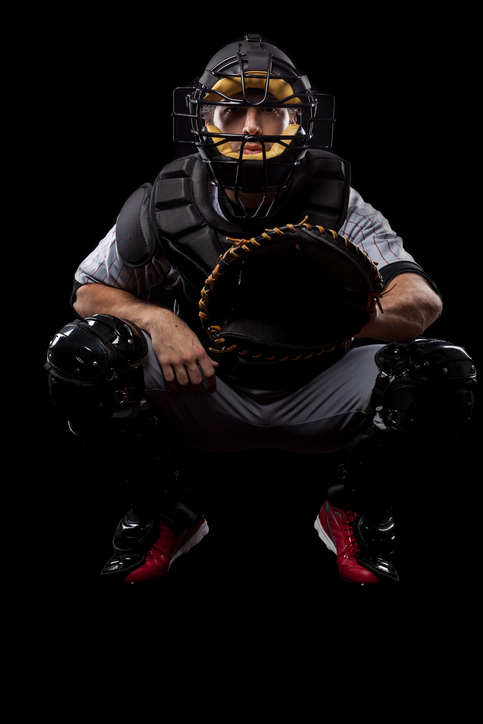
Catching is arguably the most difficult and important task in baseball. The catcher crouches behind home plate and receives the ball from the pitcher. Positioned behind home plate, the catcher can see the whole field, and therefore, is in the best position to direct and lead the other players in a play.
The catcher typically calls the pitches by means of hand signals, and needs to be aware of both the pitcher’s abilities and strengths and the batter’s weaknesses. Because the catcher’s job is to catch pitches, which often come in at speeds exceeding 90 miles per hour, the catcher wears protective equipment including a mask, chest protector, knee pads, and an extra-thick glove.
There are a couple rules that effect the catcher specifically.
| The batter is awarded a base(s) when the catcher interferes with the batter. |
| Third Strike Rule: Under this rule, three strikes do not always make an out. If (1) first base is unoccupied, or (2) first base is occupied with two outs, and in either case the catcher drops the third strike, the batter is not out, but may run. The catcher may try to pick up the ball and throw to first for the out. If there is a runner on first base or it is not the third out of the inning, then the rule does not go into effect. The reason for this is to ensure that the catcher won’t drop the third strike pitch on purpose to set up a double play. |
